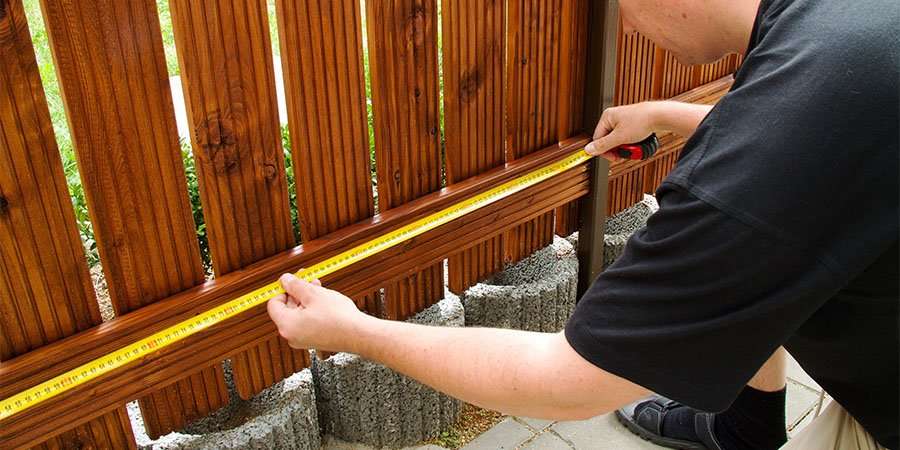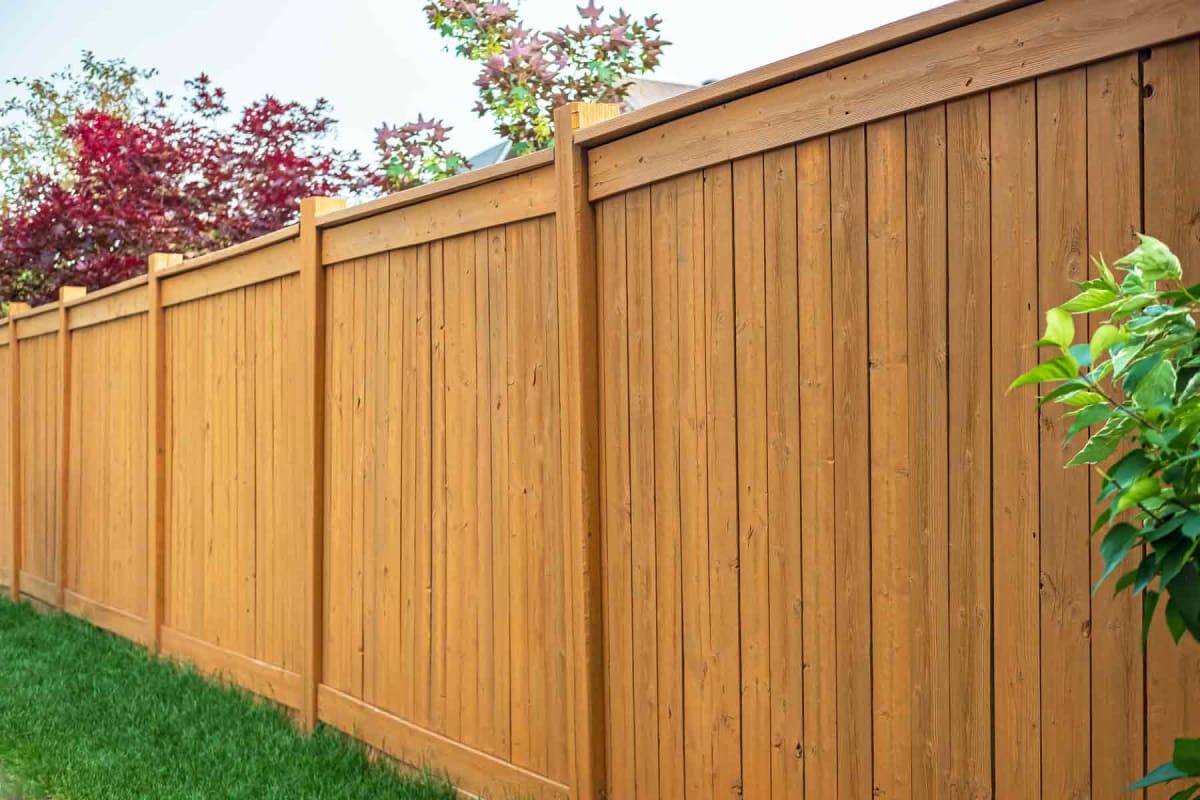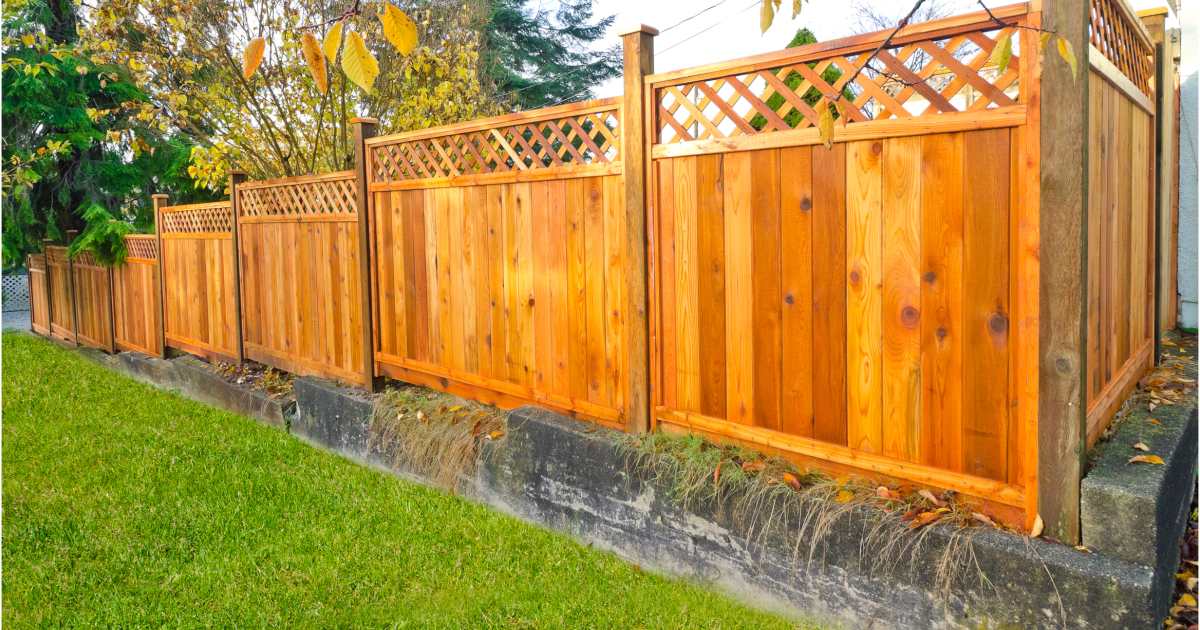All Categories
Featured
Your fence is an investment that offers curb, security, and privacy appeal. To maintain it in exceptional form, normal maintenance tailored to its product is necessary. Each fence kind has one-of-a-kind upkeep requires based upon its product's longevity, direct exposure to the components, and various other aspects. Here's an extensive guide to keeping various fence products.
![]()
Climate Defense: Apply a top notch sealant or discolor every 2-- 3 years to safeguard the wood from dampness and UV rays. For severe environments, yearly reapplication may be required. Cleansing: Utilize a garden pipe or a pressure washer on a low setting to remove dust and mildew. Adhere to up with a light cleaning agent for stubborn discolorations. Repair services: Look for loosened or decaying boards and replace them quickly. Tighten up nails or screws to maintain the framework stable. Bug Control: Use termite-resistant timber or deal with the fence with pest repellents to avoid invasions. 2. Plastic Fences. Plastic fencings are prominent for their longevity and marginal maintenance requirements.
Cleaning: Clean the surface area with a yard hose or a mix of soap and water to eliminate dust and algae. For tough discolorations, utilize a soft-bristle brush or a vinyl-specific cleanser. Inspections: On a regular basis evaluate for cracks or bending, specifically after hefty impacts or solid winds. Repair work: Replace any kind of damaged sections quickly. Vinyl fences often utilize modular parts, making repair services simple. 3. Chain-Link Fences. Chain-link fencings are strong and affordable however need regular interest to stop corrosion.
Rust Removal: Use a cable brush to eliminate corrosion from exposed locations, after that use a rust-inhibiting spray to shield the metal. Cleansing: Hose down the fence regularly to remove dust. For crud, usage soapy water and a stiff-bristle brush. Fixings: Tighten up any kind of drooping areas or change damaged web links to keep safety. 4. Wrought Iron Fencings. Wrought iron fencings provide durability and beauty yet are prone to corrosion if not effectively maintained.
![]()
Rust Avoidance: Remove corrosion places with sandpaper and apply a rust-resistant guide followed by exterior steel paint. Inspect for corrosion at the very least two times a year. Cleaning: Clean down with a fabric and soapy water to keep the coating. Stay clear of rough cleaners that can damage the surface. Painting: Paint every few years to safeguard the steel from deterioration and keep it looking fresh. 5. Aluminum Fences. Light weight aluminum fencings are lightweight, durable, and immune to corrosion, calling for less upkeep compared to wrought iron.
Cleaning: Tidy with soap and water to get rid of dirt and dirt. Wash completely to avoid residue. Inspections: Look for loosened equipment or damages, particularly after tornados. Protect or replace parts as required. Touch-Ups: Use paint to damaged or broken locations to avoid damages to the safety layer. 6. Compound Fences. Composite fencings are made from a mix of timber and plastic, combining longevity with marginal upkeep.
![]()
Cleaning: Use a hose or a soft brush with soap and water to cleanse the surface area. Avoid utilizing rough chemicals. Evaluations: Search for bending, specifically in extreme warm. Tighten or replace any kind of broken panels. Mold Avoidance: While composite products resist rot, keep the fencing completely dry and tidy to avoid mold accumulation. 7. Bamboo Fences. Bamboo is an environment-friendly alternative however requires cautious maintenance to keep its appearance and long life.
Sealing: Apply a protective sealant or varnish every 2-- 3 years to defend against wetness and UV damage. Cleaning: Clean with moderate soap and a soft sponge or brush. Prevent high-pressure cleaning, which can damage bamboo fibers. Fixings: Change damaged poles or areas to maintain architectural honesty and appearance. General Maintenance Tips for All Secure Fencing Types. Normal Assessments: Check your fence at least as soon as every season for damage, wear, or loosened components. Trimming Plant Life: Maintain hedges, vines, and plants far from the fencing to avoid moisture damage and minimize insect activity. Seasonal Adjustments: In regions with snow, avoid piling snow versus your fence to avoid structural anxiety. In hot climates, check for heat-related bending or fading. Final thought. Each fencing material has its special maintenance demands, yet a positive strategy to care can prolong its lifespan and maintain it looking its best. Wood fencings need more interest compared to vinyl or aluminum, yet each material benefits from routine cleaning, assessments, and timely repair services. By customizing your maintenance methods to the sort of fencing you own, you'll ensure that it remains to offer curb, security, and privacy charm for many years ahead.

- Wood Fences. Wood fencings are valued for their all-natural appearance but call for constant maintenance to avoid damage.
Climate Defense: Apply a top notch sealant or discolor every 2-- 3 years to safeguard the wood from dampness and UV rays. For severe environments, yearly reapplication may be required. Cleansing: Utilize a garden pipe or a pressure washer on a low setting to remove dust and mildew. Adhere to up with a light cleaning agent for stubborn discolorations. Repair services: Look for loosened or decaying boards and replace them quickly. Tighten up nails or screws to maintain the framework stable. Bug Control: Use termite-resistant timber or deal with the fence with pest repellents to avoid invasions. 2. Plastic Fences. Plastic fencings are prominent for their longevity and marginal maintenance requirements.
Cleaning: Clean the surface area with a yard hose or a mix of soap and water to eliminate dust and algae. For tough discolorations, utilize a soft-bristle brush or a vinyl-specific cleanser. Inspections: On a regular basis evaluate for cracks or bending, specifically after hefty impacts or solid winds. Repair work: Replace any kind of damaged sections quickly. Vinyl fences often utilize modular parts, making repair services simple. 3. Chain-Link Fences. Chain-link fencings are strong and affordable however need regular interest to stop corrosion.
Rust Removal: Use a cable brush to eliminate corrosion from exposed locations, after that use a rust-inhibiting spray to shield the metal. Cleansing: Hose down the fence regularly to remove dust. For crud, usage soapy water and a stiff-bristle brush. Fixings: Tighten up any kind of drooping areas or change damaged web links to keep safety. 4. Wrought Iron Fencings. Wrought iron fencings provide durability and beauty yet are prone to corrosion if not effectively maintained.

Rust Avoidance: Remove corrosion places with sandpaper and apply a rust-resistant guide followed by exterior steel paint. Inspect for corrosion at the very least two times a year. Cleaning: Clean down with a fabric and soapy water to keep the coating. Stay clear of rough cleaners that can damage the surface. Painting: Paint every few years to safeguard the steel from deterioration and keep it looking fresh. 5. Aluminum Fences. Light weight aluminum fencings are lightweight, durable, and immune to corrosion, calling for less upkeep compared to wrought iron.
Cleaning: Tidy with soap and water to get rid of dirt and dirt. Wash completely to avoid residue. Inspections: Look for loosened equipment or damages, particularly after tornados. Protect or replace parts as required. Touch-Ups: Use paint to damaged or broken locations to avoid damages to the safety layer. 6. Compound Fences. Composite fencings are made from a mix of timber and plastic, combining longevity with marginal upkeep.

Cleaning: Use a hose or a soft brush with soap and water to cleanse the surface area. Avoid utilizing rough chemicals. Evaluations: Search for bending, specifically in extreme warm. Tighten or replace any kind of broken panels. Mold Avoidance: While composite products resist rot, keep the fencing completely dry and tidy to avoid mold accumulation. 7. Bamboo Fences. Bamboo is an environment-friendly alternative however requires cautious maintenance to keep its appearance and long life.
Sealing: Apply a protective sealant or varnish every 2-- 3 years to defend against wetness and UV damage. Cleaning: Clean with moderate soap and a soft sponge or brush. Prevent high-pressure cleaning, which can damage bamboo fibers. Fixings: Change damaged poles or areas to maintain architectural honesty and appearance. General Maintenance Tips for All Secure Fencing Types. Normal Assessments: Check your fence at least as soon as every season for damage, wear, or loosened components. Trimming Plant Life: Maintain hedges, vines, and plants far from the fencing to avoid moisture damage and minimize insect activity. Seasonal Adjustments: In regions with snow, avoid piling snow versus your fence to avoid structural anxiety. In hot climates, check for heat-related bending or fading. Final thought. Each fencing material has its special maintenance demands, yet a positive strategy to care can prolong its lifespan and maintain it looking its best. Wood fencings need more interest compared to vinyl or aluminum, yet each material benefits from routine cleaning, assessments, and timely repair services. By customizing your maintenance methods to the sort of fencing you own, you'll ensure that it remains to offer curb, security, and privacy charm for many years ahead.
Latest Posts
Discover Why Chicago Drivers Prefer Montclare Auto Repair for Dependable Service and Significant Savings
Published May 24, 25
1 min read
Find the Greatest Auto Repair Deals in Montclare, Chicago
Published May 24, 25
1 min read
Picking the Right Roofing Shade: Influence On Power Performance
Published May 23, 25
1 min read
More
Latest Posts
Discover Why Chicago Drivers Prefer Montclare Auto Repair for Dependable Service and Significant Savings
Published May 24, 25
1 min read
Find the Greatest Auto Repair Deals in Montclare, Chicago
Published May 24, 25
1 min read
Picking the Right Roofing Shade: Influence On Power Performance
Published May 23, 25
1 min read